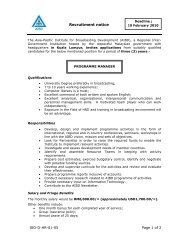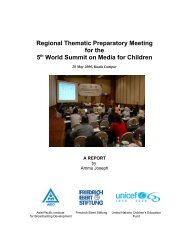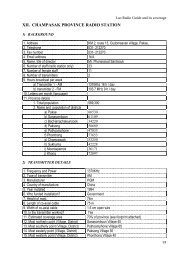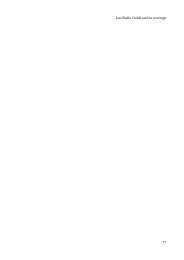FINAL REPORT Media Law to unesco july1.pdf - AIBD
FINAL REPORT Media Law to unesco july1.pdf - AIBD
FINAL REPORT Media Law to unesco july1.pdf - AIBD
You also want an ePaper? Increase the reach of your titles
YUMPU automatically turns print PDFs into web optimized ePapers that Google loves.
SESSION 4:<br />
CASE STUDIES ON COMTEMPT OF COURT<br />
CASE STUDY 1:<br />
This case evolves around a crime correspondent wanting <strong>to</strong><br />
report on a bank hold-up by use of “surreptitiously obtained”<br />
fuzzy pictures. In her report, the correspondent clearly<br />
identifies the culprit and refers <strong>to</strong> his criminal past.<br />
All work groups stated that this s<strong>to</strong>ry should not be published,<br />
since it could provoke a contempt of court case, firstly,<br />
because the identity of the culprit has not yet been confirmed<br />
by the authorities, secondly, due <strong>to</strong> the fact that the pictures<br />
were unlawfully obtained and thirdly, for revealing previous<br />
convictions. The groups concluded that, as a result of no trial<br />
being set yet, there is a danger <strong>to</strong> prejudice legal<br />
proceedings. Two groups concluded that the identification of<br />
the alleged culprit could also lead <strong>to</strong> a defamation case.<br />
Dr Iyer mentioned that the confidentiality of sources could<br />
be a major issue as soon as the case would come <strong>to</strong> the<br />
courts. Whenever identities are in doubt, he summarized,<br />
pictures should not be published.<br />
CASE STUDY 2:<br />
The second case deals with a legal reporter wanting <strong>to</strong> expose<br />
a judge of being bribed, relying on a tape recording and still<br />
pho<strong>to</strong>graphs of the judge and a named intermediary.<br />
Generally, there was a consensus among the groups: Due <strong>to</strong><br />
an imminent danger of contempt of court, the report should<br />
not be published, because the evidence was not strong<br />
enough, the authenticity of tape and pictures were at stake.<br />
Instead, public authorities should be notified. Then, the<br />
reporter could follow-up on the proceedings of these<br />
authorities. One group added that this could also be a case of<br />
defamation.<br />
CASE STUDY 3:<br />
The third study examines the case of a feature article that<br />
strongly criticizes a senior judge for misbehavior on the bench<br />
and, according <strong>to</strong> the freelance author, “misogynist” remarks<br />
during a Rotary Club meeting.<br />
12






